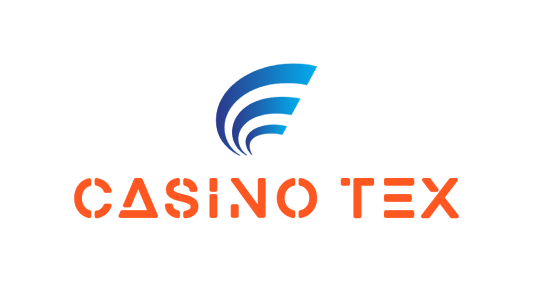In today’s rapidly evolving business landscape, understanding customer acquisition costs (CAC) is crucial.
As we analyze CAC by market and product, we recognize its vital role in shaping strategies and driving success. Our exploration will reveal how these costs vary across different markets and products, highlighting the factors that influence these variations.
Key Objectives:
-
Provide a comprehensive overview:
- Pool insights and experiences.
- Empower informed decision-making.
-
Improve market and product strategies:
- Enter new markets effectively.
- Launch new products successfully.
-
Optimize resource allocation:
- Enhance return on investment (ROI).
- Ensure efficient use of resources.
By uncovering trends and insights through this collective analysis, we aim to navigate the complexities of customer acquisition. This understanding will help us remain competitive and resilient in an ever-changing marketplace.
Understanding Customer Acquisition Costs
Customer Acquisition Costs (CAC) are the expenses incurred to attract and convert new customers. Understanding these costs is crucial for growth and success, as it helps us identify where resources are best spent and ensures we aren’t overspending. The goal is to find the sweet spot where investment yields the highest return.
Market Dynamics significantly influence CAC. They determine how we strategize and adjust efforts to effectively attract new customers. As markets evolve, our approach must also adapt to keep up with changes and challenges. Remaining agile and ready to adjust strategies is essential for success.
Cost Optimization is key in managing CAC. By continuously evaluating these costs, we can:
- Identify areas for improvement.
- Ensure efficient customer attraction.
- Balance cost and value effectively.
By mastering this balance, we can strengthen our community and foster sustainable growth.
Impact of Market Dynamics
As markets shift and evolve, our strategies need to dynamically adapt to maintain effective customer acquisition. We find ourselves in an ever-changing environment where Market Dynamics significantly influence our Customer Acquisition Cost. By understanding these dynamics, we can anticipate changes and optimize our strategies, ensuring we stay ahead of the curve.
Our community thrives on shared knowledge, and by collaborating, we can refine our approaches to Cost Optimization. The shifting tides of consumer behavior, technological advancements, and competitive actions require us to be agile and responsive. This collective agility helps us manage acquisition costs effectively, fostering a sense of belonging among us as we navigate these challenges together.
Through continuous analysis and adaptation, we transform Market Dynamics from obstacles into opportunities. We strive for a balance between innovation and cost efficiency, ensuring our Customer Acquisition Cost remains manageable while we grow our customer base.
Together, we can embrace these changes and emerge stronger, unified in our goals.
Product-Specific Cost Analysis
In our efforts to refine acquisition strategies, we focus on analyzing the specific costs associated with each product to identify opportunities for optimization. Understanding the Customer Acquisition Cost (CAC) at a product level allows us to pinpoint where our resources can be utilized more effectively.
By diving into the details, we can ensure that we’re not only meeting market demands but also fostering a sense of belonging within our customer community.
Market dynamics play a crucial role in shaping CAC, and each product faces unique challenges and opportunities. Recognizing these differences enables us to tailor our strategies for cost optimization.
For instance:
- High-demand products in competitive markets might require more aggressive campaigns.
- Niche products may benefit from more targeted approaches.
By continuously analyzing our product-specific costs, we can adapt to changing market dynamics, optimize our spending, and ultimately, strengthen our customer connections.
Together, we can create a more efficient and inclusive approach to customer acquisition that resonates with our shared goals.
Factors Influencing CAC Variations
Understanding and optimizing Customer Acquisition Cost (CAC) is crucial for effective acquisition strategies. Several key factors influence variations in CAC:
1. Market Dynamics:
- Competition and Demand: Market dynamics dictate the level of competition and demand for offerings. In saturated markets, CAC can rise due to the need for aggressive marketing to stand out.
- Emerging Markets: These might offer opportunities for lower CAC if a company is among the first to establish a presence.
2. Customer Behavior:
- Informed Consumers: As consumers become more informed, they demand personalized experiences, which can increase costs.
- Tailored Approaches: It is essential to tailor marketing approaches to meet customer expectations, impacting costs.
3. Marketing Channels:
- Channel Selection: The choice of marketing channels significantly impacts CAC.
- Channels with higher engagement might be costlier but often yield better results.
- It’s important to strike a balance between cost and effectiveness.
4. Internal Processes:
- Efficiency and Optimization: Streamlined operations and efficient resource use contribute to cost optimization.
- Competitive Edge: Effective management of internal processes helps maintain a competitive edge while managing CAC.
By understanding and navigating these variables, businesses can fine-tune their acquisition strategies to achieve their goals effectively.
Strategies for Cost Optimization
To effectively reduce acquisition costs, we must implement targeted strategies that align with both market conditions and customer expectations. By understanding market dynamics, we can tailor our approaches to optimize costs and connect with our audience more authentically.
Key Strategies:
-
Precise Segment Targeting:
- Focus on reaching those most likely to convert.
- Enhance Customer Acquisition Cost efficiency.
- Strengthen community ties.
-
Leverage Data Analytics:
- Monitor and respond to shifts in customer behavior and preferences.
- Ensure strategies remain relevant.
- Refine messaging and channels to create meaningful interactions.
-
Nurture Existing Relationships:
- Engage in personalized interactions to amplify word-of-mouth referrals.
- Encourage customer loyalty programs.
- Promote user-generated content to drive down acquisition costs.
Together, these cost optimization strategies ensure we remain agile and responsive, building a loyal customer base while efficiently managing resources.
Market Entry Cost Considerations
When entering a new market, we must carefully assess the various cost factors to ensure a successful and sustainable expansion. Understanding Customer Acquisition Cost is crucial, as it directly influences our ability to compete and thrive.
We’re all in this together, striving for a sense of belonging in our chosen markets. By embracing the unique Market Dynamics each region presents, we can tailor our strategies to align with local consumer behaviors and preferences.
Our commitment to Cost Optimization involves analyzing every aspect of our market entry strategy. Key areas to evaluate include:
- Market research
- Advertising
- Local partnerships
These elements play a pivotal role in determining our overall Customer Acquisition Cost. By doing so, we ensure our resources are allocated efficiently, maximizing our return on investment.
Joining a new market isn’t just about numbers; it’s about building lasting relationships and understanding the communities we serve. Together, we can navigate these challenges and create meaningful connections.
Product Launch Cost Strategies
Launching a product successfully requires us to carefully strategize our cost allocation to ensure both impact and efficiency.
As we navigate the complex world of market dynamics, our focus is on understanding how Customer Acquisition Cost can be optimized without compromising on quality or reach. By honing in on cost optimization, we’re not just saving money; we’re fostering a community of customers who feel valued from their first interaction with our brand.
We’re in this together, and it’s essential that we align our strategies with our shared goals.
By analyzing market trends, we can determine the most effective channels for reaching our target audience. This means prioritizing platforms where our potential customers are most active, ensuring our message resonates and builds a sense of connection.
Our approach involves a blend of data-driven insights and creative tactics to maximize impact.
In doing so, we create a launch that not only captures attention but also nurtures lasting relationships.
Achieving Sustainable ROI
To achieve sustainable ROI, we must strategically balance short-term gains with long-term customer loyalty. It’s essential to focus not just on immediate profits but also on fostering relationships that stand the test of time.
Analyzing Customer Acquisition Cost (CAC):
- Carefully analyze CAC to identify opportunities for cost optimization.
- Align cost strategies with market dynamics to ensure efficiency.
Understanding Market Dynamics:
- Stay attuned to changing customer needs and behaviors.
- Adapt strategies to remain effective and relevant.
- Create a sense of unity and belonging within the customer base.
Investing in Personalized Experiences:
- Ensure experiences resonate with the audience.
- Make customers feel valued and connected.
Optimizing Costs:
- Focus on refining processes.
- Leverage data-driven insights for informed decisions.
- Reduce unnecessary expenses without cutting corners.
This approach not only strengthens our ROI but also secures a stable and thriving future for our collective endeavors.
Conclusion
In conclusion, analyzing customer acquisition costs (CAC) by market and product is crucial for optimizing strategies and achieving sustainable ROI.
Understanding the impact of:
- Market dynamics
- Product-specific cost variations
- Factors influencing CAC
is key.
By implementing cost optimization strategies tailored to:
- Market entry
- Product launch considerations
businesses can drive efficient customer acquisition and maximize returns on investment.




